PabloNZ
Member
I don't have one, but will get one in the morning if I remember. I can take a few other pics too if needed, just let me know.Have you a picture of the frames without the bags on them ?
I don't have one, but will get one in the morning if I remember. I can take a few other pics too if needed, just let me know.Have you a picture of the frames without the bags on them ?
I was interested how the frames sat and how they were attached..if it only takes 5 mins to remove then it's useful addition for commuting purposesI don't have one, but will get one in the morning if I remember. I can take a few other pics too if needed, just let me know.
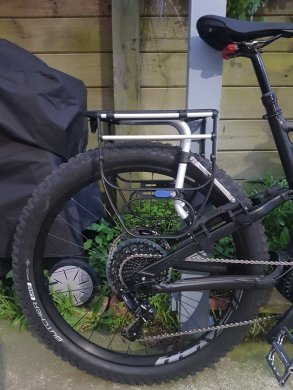
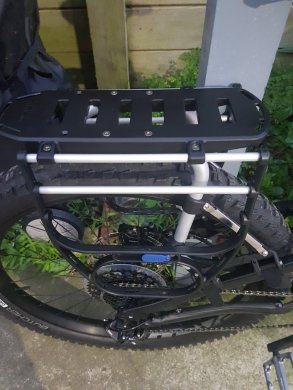
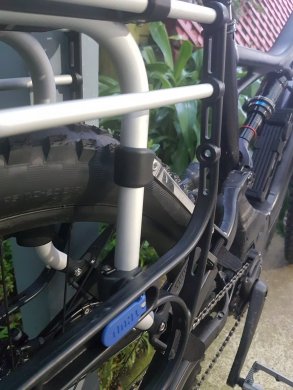
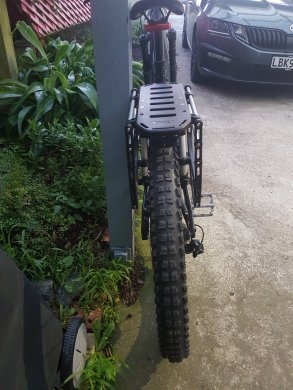
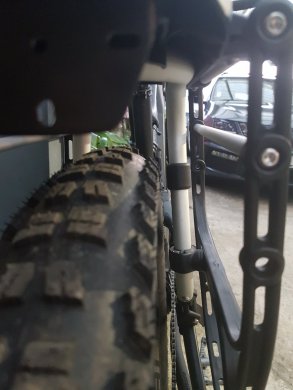
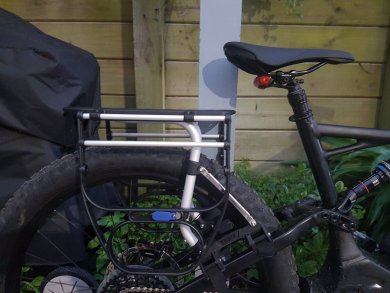
Thanks for the pics and explanation ....have you ever tried different tyres more aimed for road/ paths for your commuteSome more pictures of the rack and bike are below.
That's my current dilemma. I want to have some lower rolling resistance tyres, and I want them tubeless, and I want to have the ability to spend no more than a few minutes getting my bike ready.Thanks for the pics and explanation ....have you ever tried different tyres more aimed for road/ paths for your commute
Any suggestions?
Wow... like reading my own mind ! I also have a Following MB, and am also contemplating a Kenevo... but tbh, can’t afford both. So was wondering whether I’d need to keep the Evil (which I’d really like to, as I do love it).
What did you decide ?
Just checked back in here... Wow, did I hit a nerve? That's one heck of a post!Agree almost entirely with the last paragraph.
All of my comments are based on the use of pedelecs, and cycling in general on public roads, that is all the law is really intended to deal with.
But firstly, please, please do not suggest that you have the same level of control on your road bike as you do with, not just your ebike, but any mountain bike. On any mtb you have at least 5 times the contact patch on the road surface, this directly equates to an at least similar, subsequent increase in braking performance, even before you consider the average size and efficiency differences between the brakes themselves, and body positioning.
The law as it is, albeit as i said completely arbitrary as there has never been any legislation on e-bikes, is about road safety. Braking performance surely HAS to be the primary measure by which road safety standards are set? Obviously there are many other factors to consider, but just to continue my point about differing levels of control offered by a typical road bike over that of a typical mtb or e-mtb, why don't mountain bikers use drop bars? Why have mtb handlebars been steadily increasing in width, and quite dramatically i might add, over the last 20 years? The answer, as you know, is control.
You make good points but i think you have to admit to having had a slightly defensive, knee jerk reaction to my suggesting road bikes offer limited control vs a mountain bike, coming out with what essentially amounted to "You might not be able to control a road bike but i can!". Excuse the paraphrase, but my point is that i think you're missing the point for the sake of argument.
Lets not be silly, narrower bars offer less control, skinny itty bitty tyres offer much less grip, and therefore much less braking performance, no matter how much better road bike brakes are now, it's the tyres that stop you. Control and braking performance. That's the bottom line.
If you'd like to come out with me and do some tests that would be great, you on your road bike, me on my unrestricted Kenevo, we'll both sit at the speed whichever one of us tops out at first (which will still be me) and do an emergency stop, then i'll listen to some more of your points. Perhaps then we could devise a hazard/evasive manoeuvre test and see which of us kills the pedestrian? Then i'll listen some more.
The point is this. At any given speed, an e-mtb offers greater control, and a shorter stopping distance than a road bike, already making the road bike inherently more dangerous than an e-mtb, add to that the fact that as stated above, they are still faster than current e-mtb's, just makes them many more orders of magnitude less safe, on the road, than an e-mtb. I don't see how anyone can argue against that.
The law. Currently, the law says that road bikes, as they are, are fine, only facing some scrutiny after the case last year involving a woman who died after being hit by a cyclist in London who just couldn't stop in time because he had no brakes. There was a lot of talk in the aftermath of that accident about the law requiring all bikes to have a front brake which is a good thing (read blindingly obvious) and i totally agree obviously. But there you go, talk of safety legislation went straight to braking, stopping distance, the number one safety element, common sense.
The law of the road should still stand, if you do 30mph in a 20mph zone on a pushbike, you should get the same punishment any road user gets. But currently, speed limits on the road do not apply to cyclists in the UK, which is madness, we need solutions... So.
1. All cyclists should simply be asked to adhere to the speed limit or risk being charged with an actual motoring offense.
That would go halfway to solving this problem already, which is mostly an intellectual problem, not one that really manifests in the real world, which is almost the entire point of this post
2. Maybe all bikes should be subject to some form of MOT? Or, more logically, a stopping distance test, simultaneously testing the equipment AND the riders ability to use it! (More work for local 'government accredited' bike shop/test centres?)
But this distance would have to be set with the most commonly used, standard commuter bicycle currently in use, the road bike. An average road bike, with average brakes, and all e-mtb's would easily be able to meet those standards, problem solved?
I really don't care how we get there, or whatever it is i'd have to do, i just want to be able to legally ride my unrestricted Kenevo anywhere i like and simply be responsible for my actions, just like the roadies do now, who will still be overtaking me!!!
A couple of problems arise when you apply this technology to a road bike, but the solutions are still simple.
1. Have a poll to decide upon the most widely accepted highest speed an average rider could reach on an ordinary road bike, i reckon that's around 40mph, but whatever that turns out to be, simply limit the assistance on those bikes to that speed.
2. How do you determine what is a road bike and what isn't? Tyres. I could write a complete legislative draft on tyre specification requirements here but i've written more than enough already and i'm pretty sure we wouldn't have a problem coming to an agreement on that. After all is said and done, it's enough to say, that if you put skinnys on your legally unrestricted e-mtb to circumvent the tyre regulations you are simply breaking the law in the same way as a motorist that's driving around with illegal or bald tires on their car, they can't catch you on camera doing it, but if caught, you'll be handed a hefty fine and will have to pay to get your bike back from the cops, though it will be much easier to spot a cyclist doing that than the motorist.
The end result of any legislation should ensure that all cyclists are capable of roughly the same speed, not one particular group (roadies) being allowed to go so much faster than everyone else because of the inherent nature of the bike, especially when those bikes are the least safe, if road bikes can legally do 40mph in a 40mph zone, so too should e-mtb's.
Please fire some more arguments at me, i feel like i'm building a case to take to my MP
The World's largest electric mountain bike community.